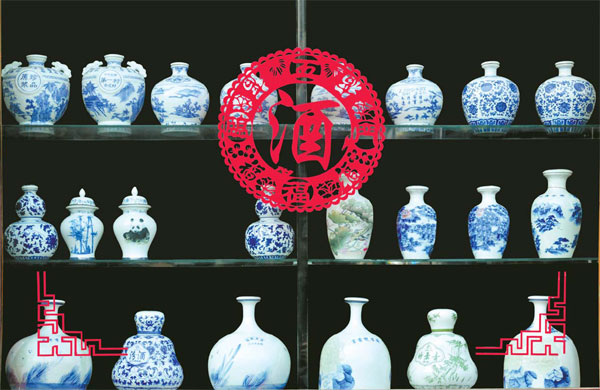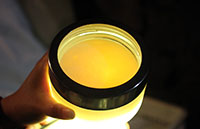The sea makes meals sing at Fujian eateries
Updated: 2015-07-28 08:03
By Sun Li(China Daily)
|
|||||||||||
When someone travels to Southeast China's Fujian province, a land with a maritime area of 136,300 square kilometers and a total coastline of 3,324 km, seafood is a predictable highlight of the province's dining scene and draws foodies to the area's fanciest and humblest restaurants.
In Fuzhou and Quanzhou, both of which once served as important ports along the ancient Maritime Silk Road, local signature snacks reflect the cities' marine culture.
Yuwan, or fishball, has been playing such an important role in the cuisine world of Fuzhou that local people say: "If there is no yuwan, there is no dinner."
According to Zhang Congliang, a Fuzhou-based nutritionist, yuwan is made from the minced meat of eel or shark, both high in magnesium that can help maintain normal muscle and nerve function.
Fuzhou is one of the hottest cities in the country. In summer, when you find yourself in the searing heat, the dish could also help beat the heat, Zhang says.
Yuwan is not only served by restaurants, but also by snack bars and street vendors. A bowl of 12 tennis-ball sized fishballs can cost as little as 10 yuan ($1.60).
Lin Miancong, a chef of Yonghe Yuwan, a popular chain in Fuzhou, says although yuwan is also commonly seen in cities of Southeast Asia, the Fuzhou yuwan is distinctive because of its meat filling. After removing all bones from the fish, the chopped shark or eel will be mixed with salt, monosodium glutamate, egg whites, flour and water. The mixture is then beaten into soft and spongy balls with a stuffing of minced pork, chopped green onion, shrimps and seasoning. To get rid of the fishy smell, pepper is often added into the mix.
Legend has it that Emperor Qin Shihuang (259-210 BC), who first unified China, loved fish but hated fish bones. It is said he once traveled to the south, the home of tasty fish dishes, and asked to be served the most delicious fish. A local chef who knew about the emperor's ill temper decided to remove all the bones from the fish and smashed up the flesh with the back of his cleaver. The chef then made the fish paste into balls with a meat filling hidden inside. The emperor apparently was delighted.
The list of must-try local Quanzhou delights would never be complete without an oyster omelet.
Made with sweet-potato starch, oysters, egg and lettuce with bean spouts, the oyster omelet has a crispy outside but a chewy and springy texture.
According to Ruan Hanhong, a chef based at the Quanzhou Hotel, the most opportune time to taste the dish is between January and April, when the oysters are the most succulent, plump and fresh.
As the dish is often made into a pancake, a ladle of starch solution needs to be added to the pan and eggs will be broken into the pan and be spread evenly over the starch base.
"It is not as simple a meal to make as it seems to be. The pancake has to be very carefully flipped without breaking, and it should be fried until the other side is also golden," Ruan says.
Many diners love the nicely charred and crispy edges and the gooey center forms a pleasurable contrast, Ruan says.
An ideal place to sample the area's food is the Xunpu village, some 10 km southeast of downtown Quanzhou.
The 1.5-square-km fishing village noted for the fresh, meaty oysters attracts flocks of people in the province all year round. The scrumptious oyster omelet is sold at 20 yuan per plate.
Related Stories
Under the sea, on the table 2014-10-12 10:28
Xanadu brings seafood teppanyaki 2014-07-29 14:15
Seafood to star on special Spanish menu 2014-05-16 14:09
China's Hainan enters spring fishing season 2014-03-04 10:13
A hidden French bistro draws inspiration from Japanese seafood 2014-02-16 08:36
Today's Top News
Greek PM under pressure over drachma plan
FT sale to Japan's Nikkei includes Chinese website
Beijing condemns Somali attack, mourns deaths
Stocks make sharpest daily decline since 2007
Tian'anmen gets early makeover for grand parade in September
Olympic bid panel cites city's merits
Discovery of Earth-like planet disappoints Chinese Web users
Financial Times sale – the deal no-one saw coming
Hot Topics
Lunar probe , China growth forecasts, Emission rules get tougher, China seen through 'colored lens', International board,
Editor's Picks

|

|

|

|

|

|






